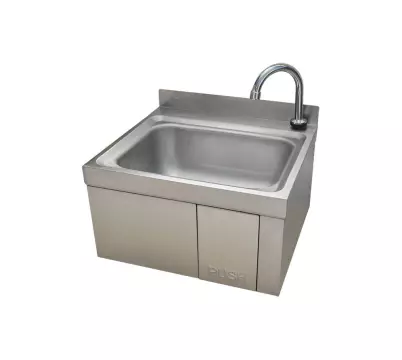
From Chemicals to Contaminants: How Lab Sinks Handle Hazardous Waste
Introduction
Lab sinks play a crucial role in handling hazardous waste. In a laboratory setting, the proper disposal of chemicals and contaminants is of utmost importance to ensure the safety of personnel and the environment. This article will delve into the various aspects of lab sinks, including their types, proper use and care, and their role in managing hazardous waste.
What is a Lab Sink?
A lab sink is a specialized fixture designed for use in laboratories. It serves as a central point for water supply, drainage, and disposal of liquids used during experiments and research activities. Lab sinks are typically made from materials that are resistant to chemical corrosion, ensuring their durability and longevity.
Types of Lab Sinks
There are several types of lab sinks available, each catering to specific needs and requirements. Some common types include:
Stainless Steel Sinks: Stainless steel lab sinks are widely preferred due to their excellent resistance to corrosion and chemical damage. They are also easy to clean and maintain.
Epoxy Resin Sinks: Epoxy resin sinks offer high resistance to chemicals, making them suitable for handling hazardous materials. They are non-porous, preventing any absorption or contamination.
Polypropylene Sinks: Polypropylene lab sinks are lightweight yet durable, making them an ideal choice for laboratories where mobility and flexibility are desired. They exhibit good chemical resistance as well.
Porcelain Sinks: Porcelain lab sinks provide an aesthetically pleasing option while maintaining durability and chemical resistance. They are easy to clean but may be prone to chipping or cracking if mishandled.
What is the Proper Use and Care of Laboratory Sinks?
Proper use and care of laboratory sinks are essential to ensure their longevity and effectiveness in handling hazardous waste.
1. Follow Manufacturer's Guidelines
It is crucial to adhere to the manufacturer's guidelines when using lab sinks. These guidelines outline specific instructions for installation, usage, and maintenance.
2. Use Compatible Chemicals
Only use chemicals that are compatible with the material of the lab sink. Consult chemical compatibility charts or seek guidance from experts to avoid damaging the sink or causing cross-contamination.
3. Regular Cleaning and Maintenance
Regular cleaning is vital to prevent build-up of chemicals or contaminants in the sink. Use appropriate cleaning agents recommended by the manufacturer and follow a regular maintenance schedule to ensure optimal performance.
4. Prompt Disposal of Hazardous Waste
Dispose of hazardous waste promptly and properly. Avoid allowing chemicals or contaminants to accumulate in the sink, as this Brayco New Zealand can pose a risk to laboratory personnel and the environment.
5. Protection Measures
Wear appropriate personal protective equipment (PPE) when handling hazardous materials near lab sinks. This includes gloves, goggles, lab coats, and respiratory protection if necessary.
What Type of Sink is Used in Laboratory?
Different types of lab sinks are used in laboratories based on specific requirements and applications.
1. Fume Hood Sinks
Fume hood sinks are typically installed within fume hoods, which provide a controlled environment for handling volatile chemicals. These sinks allow for immediate disposal of waste generated within the hood, minimizing exposure risks.
2. General Purpose Sinks
General purpose sinks are versatile and can be found in various laboratory settings. They are suitable for routine tasks such as handwashing, glassware rinsing, and basic liquid disposal.
3. Acid Resistant Sinks
Acid resistant sinks are designed specifically for handling corrosive acids commonly used in laboratories. They offer enhanced resistance against acid damage and prevent contamination of other areas.
4. Radioactive Sinks
Radioactive sinks are specially constructed with additional shielding materials to handle radioactive materials safely. These sinks prevent the spread of radiation and minimize the risk of contamination.
5. Eye Wash Sinks
Eye wash sinks are critical in emergency situations where immediate eye rinsing is necessary. They provide a continuous flow of water to flush out any contaminants that may have come into contact with the eyes.
Frequently Asked Questions (FAQs)
- Lab sinks play a crucial role in preventing cross-contamination and ensuring proper disposal of hazardous waste. They help maintain a clean and safe working environment for laboratory personnel.
- Lab sinks are designed to withstand specific types of chemicals based on the material they are made from. It is important to consult chemical compatibility charts or seek expert advice to ensure the sink's suitability for handling particular chemicals.
- In case of a clogged lab sink, it is recommended to contact maintenance personnel or follow established protocols within your organization. Attempting to unclog the sink without proper knowledge or equipment may cause further damage.
- The use of lab sinks is subject to various regulations, including those related to hazardous waste disposal, environmental protection, and workplace safety. It is important to familiarize yourself with these regulations and comply with them accordingly.
- Regular inspections should be conducted as part of routine maintenance protocols. The frequency may vary depending on factors such as usage intensity, type of chemicals used, and manufacturer's recommendations.
- Yes, many manufacturers offer customization options for lab sinks to meet specific requirements. This may include size, shape, additional features, or material selection.
Conclusion
Lab sinks play a vital role in handling hazardous waste and maintaining laboratory safety. By understanding the different types of lab sinks, their proper use and care, and following established protocols, laboratories can effectively manage chemicals and contaminants while ensuring the well-being of personnel and the environment. It is crucial to prioritize safety and adhere to regulations to create a secure working environment for all.
